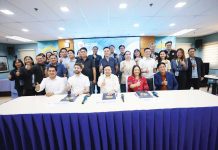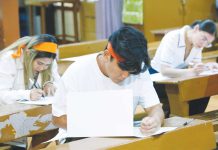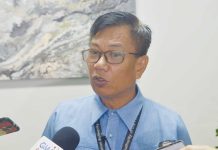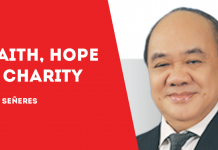
Global war against poverty
I think that it would be correct to say that poverty alleviation is a short term task; that poverty reduction is a medium term task; and that poverty eradication is a long term task.
Could poverty really be eradicated?
I say it could be, but first, we need to agree on the definition that poverty alleviation is a qualitative measure, and its purpose is to lessen the impact of poverty without really reducing the number of victims.
In contrast, poverty reduction is a quantitative measure, and its purpose is to statistically reduce the number of victims.
I believe that as of now, very few writers are using the term “victims” to refer to the people below the poverty line. I prefer to use that term now, because in truth, these people are victims of an economic system that completely works against them, working instead in favor of the economic elites.
Going back to my question, I believe that poverty could be eradicated in specific jurisdictions such as cities and countries, even if it could not be completely eradicated worldwide. As it is now, poverty has already been eradicated in many exclusive villages.
Disaster management
I think that it would be correct to say that disaster mitigation is a short term task; that disaster preparation is a medium term task, and disaster risk reduction is a long term task.
But could disaster risks really be reduced?
To answer this question, I would have to argue that rain is not the cause of floods. The cause of floods is the lack of drainage. Moreover, I would say that the cause of floods is the lack of solid waste management, or garbage recycling in simple terms.
Both combined, I would say that a good drainage system plus a good recycling system could reduce the risks of flood damage.
The problem of hunger
I think that feeding the hungry is a short term task; that community gardening is a medium term task, and food security is a long term task. At this point, it is important to distinguish between community gardening that is intended only for local consumption, and food security through a robust agriculture industry that is intended not only for national consumption, but also for international distribution.
In case you are wondering why I am writing about disaster management while I am on the subject of poverty, I will answer that by saying that whenever disasters would strike, most of the victims are the poor people who tend to live in the disaster prone areas, where their dwellings are usually not disaster resistant.
The truth is that poverty has been around long before climate change came around, and it could be said that it is the greed of the polluters that has brought this wrath upon the poor people.
Architect Jun Palafox argues that in the case of the 2013 super typhoon “Yolanda” disaster, the rescue component should have come before the relief component.
I not only agree with him, I will also offer my own argument that in the second stage, the rehabilitation component should come before the rebuilding component.
What I mean by that is that the basic utilities and public services (the soft projects) should be rehabilitated first, before rebuilding the homes and the other infrastructure (the hard projects).
I learned from my experience in the old Ministry of Human Settlements (MHS) that it is easier to give homes to the people, but it is harder to give them livelihood. Integrated Area Development (IAD) is even harder to do, but it has to be done. “Build Better and Build Smarter” is an objective that has to be done too.
Simply rebuilding the shanties is not enough, because that is the easiest to do. It is also wrong to rebuild the shanties where they once stood, because that is where the disaster will probably strike again, as history has shown us.
It is possible to reduce poverty where the disaster has struck. That should be enough for now, even if in theory, it is also possible to eradicate poverty in those places.
Poverty reduction is easier said than done, but we have to start somewhere, and the best place to start is to identify a product that the local people could produce. Until such time that a better product could be identified, the logical choice is to grow vegetables firstly for their own consumption, then secondly for them to sell for profit when they have a surplus.
In their search for a better product, they have to address the twin challenges of competitiveness and sustainability, because it would be difficult for them to sustain their production if they are not competitive in the market. Just in case that they would decide to relocate to higher ground, it may be a good idea for them to convert their former location into an agro-fisheries complex, where they could grow high value fish and water fowls.
Funny as it may sound, water fowls could survive in the water when there are floods, while the chickens would die. The fish too could survive the floods, and at least they would have something to eat./PN





